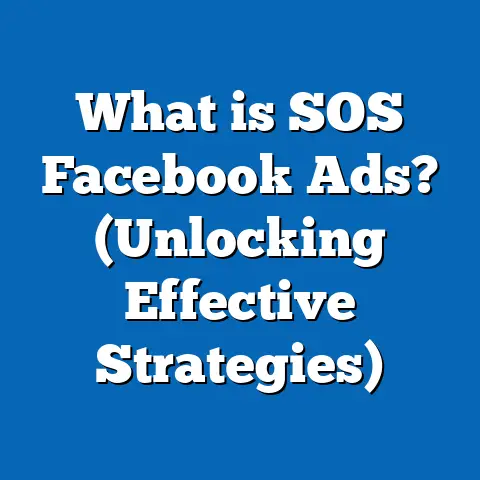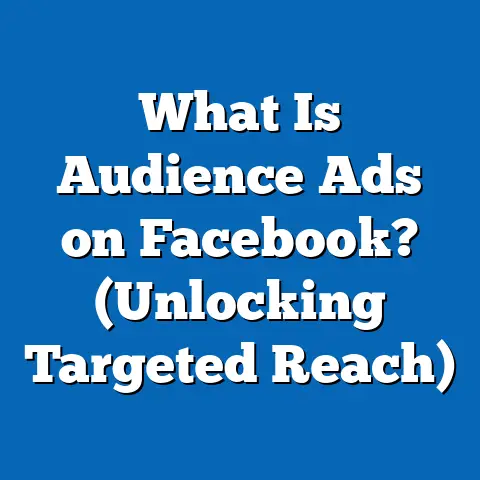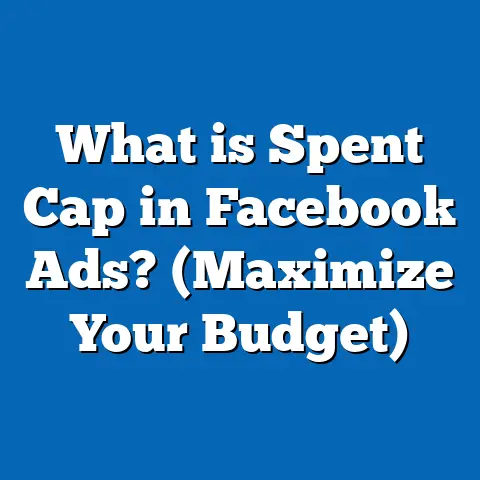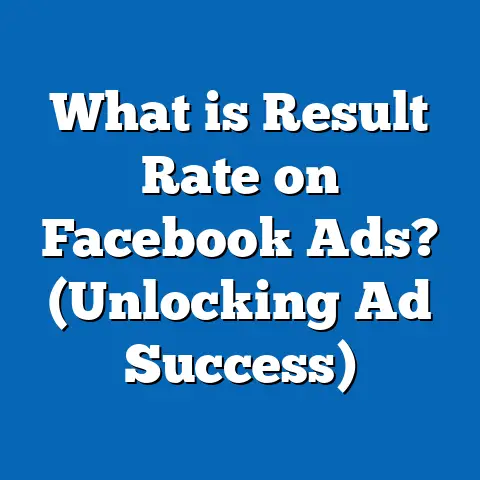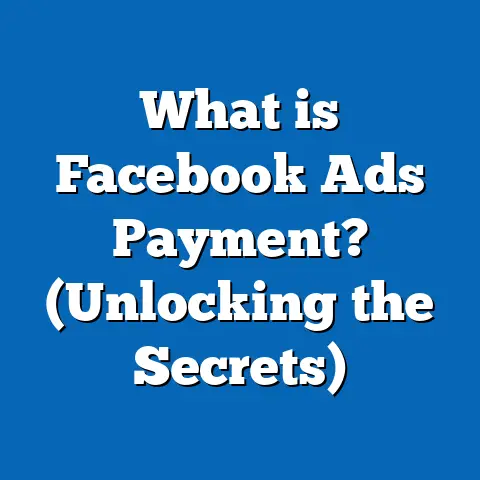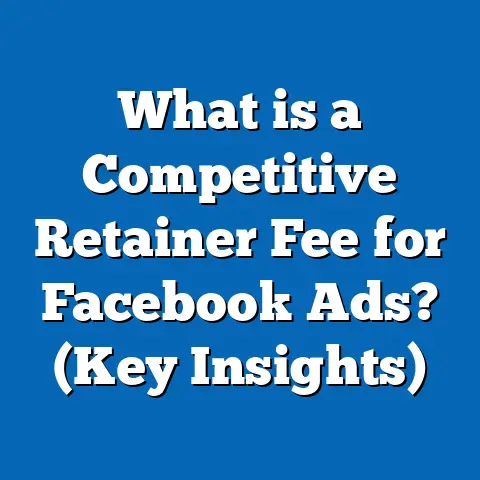What is a Typical Conversion Percentage? (Unlocking Ad Success)
Introduction: Innovation and the Quest for Conversion Success
Innovation drives progress in every industry, and digital marketing is no exception. As the digital landscape evolves, businesses are constantly seeking smarter ways to reach their audience and maximize their return on investment (ROI). Among the many metrics marketers track, conversion percentage stands out as a vital sign of advertising health and success.
But what exactly is a typical conversion percentage? Why should marketers care about this seemingly simple number? And how can understanding it unlock the potential of your Facebook ad campaigns?
This guide will answer all these questions in depth. From defining what conversion percentage means in digital advertising to exploring industry benchmarks, real-world case studies, and advanced optimization techniques, you will gain a complete understanding of how to measure, analyze, and improve your ad performance. Whether you’re a marketing professional or a business owner, this comprehensive resource is designed to empower you with actionable insights and practical tools to unlock ad success.
Understanding Conversion Percentage: The Foundation of Digital Advertising Metrics
What Is Conversion Percentage?
At its core, conversion percentage (also called conversion rate) measures how many people take a desired action after interacting with an advertisement. This action can vary depending on your campaign goals: it might be making a purchase, filling out a lead form, downloading an app, or subscribing to a newsletter.
Mathematically, it’s calculated as: Conversion Percentage=(Number of ConversionsNumber of Ad Interactions or Clicks)×100\text{Conversion Percentage} = \left(\frac{\text{Number of Conversions}}{\text{Number of Ad Interactions or Clicks}}\right) \times 100
For example:
- If 1,000 users click on your Facebook ad and 50 complete a purchase, your conversion rate is 501000×100=5%\frac{50}{1000} \times 100 = 5\%.
Different Types of Conversions
Conversions aren’t always about sales. Understanding the type of conversion you’re measuring is critical:
- Micro-Conversions: Small steps leading to a final goal (e.g., newsletter signups, video views).
- Macro-Conversions: Primary objectives like completing a purchase or booking a service.
Tracking both can provide a fuller picture of user engagement and funnel progression.
Why Conversion Percentage Is Crucial
Conversion rate is more than just a number; it’s an indicator of how well your ads resonate with your audience and how effective your marketing funnel is. A low conversion rate could mean poor targeting, unpersuasive creative, or weak post-click experience.
Benefits of monitoring conversion rates include:
- Optimizing Campaign ROI: Higher conversion rates typically mean better returns on ad spend.
- Budget Allocation: Focus funds on campaigns or audiences that convert well.
- Performance Benchmarking: Set realistic goals based on historical data and industry norms.
- Identifying Bottlenecks: Pinpoint where prospects drop off in your funnel.
Industry Benchmarks: What Are Typical Conversion Percentages?
Variations by Industry
Conversion percentages vary widely across industries due to differences in customer buying behavior, product complexity, and price points.
| Industry | Average Conversion Rate (All Channels) |
|---|---|
| E-commerce | 2.8% |
| Finance & Insurance | 5.0% |
| B2B Services | 3.0% |
| Health & Wellness | 3.5% |
| Travel & Hospitality | 2.5% |
| Real Estate | 2.7% |
These numbers offer a baseline but remember that your specific niche within an industry may differ significantly.
Facebook Ads Benchmarks
Facebook’s unique targeting and rich ad formats produce slightly different average conversion rates:
- Overall average: 9.21% (WordStream, 2023)
- E-commerce: ranges between 1.85% and 4.5%
- Lead generation campaigns: can achieve 10%-15%
This higher average compared to general online marketing highlights Facebook’s power when used correctly.
Factors Behind Industry Differences
- Customer Journey Length: B2B services often have longer decision cycles reducing immediate conversions.
- Price Point: High-ticket items usually convert at lower rates but yield higher value per conversion.
- Audience Familiarity: Established brands or repeat customers tend to have higher conversion percentages.
- Complexity of Offer: Simpler offers like newsletter signups convert better than complex purchases.
Deep Dive: Facebook Ads Conversion Percentage Analysis
Why Facebook Ads Show Variable Conversion Rates
Facebook’s platform provides advertisers with granular control over targeting options:
- Demographics (age, gender)
- Interests and behaviors
- Custom audiences (website visitors, email lists)
- Lookalike audiences (similar profiles to existing customers)
This segmentation allows precision but also requires deep understanding to avoid wasted impressions.
Breakdown of Facebook Ad Types and Their Conversion Potential
| Facebook Ad Format | Description | Typical Conversion Rate |
|---|---|---|
| Image Ads | Single static image | 2%-5% |
| Video Ads | Short videos showcasing product/brand | 5%-10% |
| Carousel Ads | Multiple images or videos users can scroll | 4%-8% |
| Collection Ads | Interactive shopping experience | 6%-12% |
| Lead Generation Ads | In-app forms for collecting user info | 10%-15% |
Key Performance Indicators Related to Conversion Percentage
Beyond raw conversions, marketers track:
- Click-through rate (CTR): Percentage who clicked the ad.
- Cost per conversion: How much you pay for each completed action.
- Return on ad spend (ROAS): Revenue generated per dollar spent.
Improving conversion rate often lowers cost per conversion and boosts ROAS.
Case Study: How Audience Segmentation Boosted Conversion Rates by 40%
Background
A mid-sized online retailer specializing in home fitness equipment wanted to improve their Facebook ad performance which was averaging only a 3% conversion rate.
Approach
- Audiences segmented into three groups: fitness enthusiasts aged 25–40, new mothers aged 28–35, office workers aged 30–45.
- Customized creatives created for each segment:
- Fitness Enthusiasts: Video demonstrations
- New Mothers: Carousel showing product versatility
- Office Workers: Static ads emphasizing convenience
- Tailored landing pages for each group.
Results
| Segment | CTR (%) | Conversion Rate (%) | Cost per Conversion ($) |
|---|---|---|---|
| Fitness Enthusiasts | 4.5 | 7.8 | $12 |
| New Mothers | 3.2 | 6.4 | $15 |
| Office Workers | 2.9 | 4.1 | $18 |
Overall conversion rate increased by 40%, showing the power of segmentation and personalization.
Technical Concepts Explained Simply
What Is A/B Testing and How It Impacts Conversion Rate?
A/B testing involves running two versions of an ad or landing page simultaneously to determine which performs better.
Example:
- Version A uses blue CTA button
- Version B uses red CTA button
If Version B converts at 6% compared to Version A’s 4%, you know red buttons perform better for this audience.
Attribution Models and Their Influence on Conversion Metrics
Attribution models assign credit for conversions to different touchpoints in the customer journey.
Common models:
- Last-click attribution: Credits the last interaction before conversion.
- First-click attribution: Credits the first interaction.
- Linear attribution: Equally credits all touchpoints.
- Data-driven attribution: Uses algorithms for precise credit allocation.
Choosing the right model affects how you interpret conversion percentages from Facebook ads.
Optimizing Your Facebook Ads to Improve Conversion Percentage
Step 1: Sharpen Your Targeting
Use Facebook’s Custom Audiences to retarget website visitors or upload customer lists for precise targeting. Employ Lookalike Audiences to find similar potential buyers.
Step 2: Craft Compelling Creatives
Use high-quality images/videos that clearly show product benefits. Write clear headlines and CTAs that motivate action.
Step 3: Reduce Friction on Landing Pages
Ensure pages load quickly and forms are simple. Use trust signals like testimonials or secure payment badges.
Step 4: Use Retargeting Campaigns
Retarget users who clicked but didn’t convert with follow-up offers or reminders.
Step 5: Test Offers and Messaging
Experiment with discounts, free trials, or exclusive content to see what drives better conversions.
Comparison with Other Advertising Platforms
| Platform | Average Conversion Rate (%) | Strengths | Weaknesses |
|---|---|---|---|
| Google Ads | 3.75 | High purchase intent | Usually higher CPC |
| Instagram Ads | 1.08 – 3 | Visual storytelling | Younger audience bias |
| LinkedIn Ads | 2 – 6 | B2B targeting | Higher cost per click |
| Twitter Ads | ~1 | Brand awareness | Lower direct conversion rates |
Facebook’s advantage lies in its extensive audience data and multiple ad formats enabling diverse campaign strategies.
Real World Application: Step-by-Step Guide to Calculate & Improve Your Conversion Rate
Calculating Your Conversion Percentage
- Track all conversions relevant to your campaign goals.
- Gather data on total clicks/impressions leading to those conversions.
- Use the formula:
Conversion Rate=ConversionsClicks×100\text{Conversion Rate} = \frac{\text{Conversions}}{\text{Clicks}} \times 100
Action Plan to Improve It
- Analyze current performance against industry benchmarks.
- Segment your audience for personalized messaging.
- Optimize creatives based on engagement data.
- Simplify landing pages.
- Implement retargeting.
- Run A/B tests regularly.
- Use Facebook’s analytics tools for ongoing monitoring.
Advanced Topic: Multi-Touch Attribution & Its Impact on Conversion Analysis
Most conversions are the result of multiple marketing touchpoints across channels and time periods. Relying solely on last-click conversions undervalues earlier interactions that influence decisions.
Facebook Attribution tool allows marketers to visualize paths users take before converting — including impressions from Instagram Ads, video views on Facebook Stories, or clicks from email campaigns linked through Facebook pixels.
Understanding these paths helps allocate budgets more effectively across campaigns that contribute indirectly but significantly to final conversions.
Privacy Changes & Their Effect on Tracking Conversions on Facebook
Recent privacy updates like Apple’s iOS 14+ app tracking transparency framework have made accurate conversion tracking more challenging. Users now opt out of cross-app tracking, limiting data available for Facebook’s pixel and SDK.
Solutions include:
- Using Aggregated Event Measurement (AEM) by Facebook.
- Prioritizing events in pixel setup.
- Leveraging server-side tracking.
- Focusing on broader campaign goals alongside micro-conversions.
Adapting to these changes is essential for maintaining reliable conversion data.
Current Trends Influencing Facebook Ad Conversion Performance
- AI & Machine Learning: Facebook’s automatic placements and campaign budget optimization utilize AI to improve conversions without manual intervention.
- Shoppable Content: Direct purchase options embedded inside ads reduce friction in the sales funnel.
- Video & Stories Format: Increasingly preferred formats by users offering immersive experiences leading to higher engagement and conversions.
- Personalization: Dynamic ads that adjust content based on user behavior boost relevance.
- Cross-Platform Integration: Combining Facebook campaigns with Instagram and Messenger expands reach while maintaining consistent messaging.
Summary of Key Points
- Conversion percentage is the ratio of users completing desired actions after ad interaction.
- Typical conversion rates vary by industry but average around 2%-5% for most sectors.
- Facebook ads tend to have higher average conversion rates due to advanced targeting capabilities.
- Factors that influence conversions include audience targeting, ad quality, landing page experience, and offer attractiveness.
- Segmentation and personalized creatives dramatically improve performance.
- Multi-touch attribution provides deeper insight into conversion paths beyond last-click metrics.
- Privacy changes require marketers to adapt tracking strategies.
- Ongoing optimization through testing and data analysis is crucial for sustained success.
Final Takeaways for Marketers & Business Owners
- Benchmark your current campaigns against industry norms but focus on continuous improvement rather than perfect numbers.
- Invest time in understanding your audience deeply using Facebook’s rich data tools.
- Prioritize creating compelling creatives paired with seamless post-click experiences.
- Use data-driven approaches like A/B testing and multi-touch attribution analysis.
- Stay agile with privacy law changes affecting tracking and measurement.
- Embrace evolving trends such as video ads and shoppable posts for better engagement.
By mastering these elements around typical conversion percentages, you can unlock true advertising success on Facebook and drive measurable business growth.
If you want me to create detailed templates for campaign tracking or step-by-step guides on specific aspects like A/B testing setup or multi-touch attribution configuration within Facebook Ads Manager, feel free to ask!

